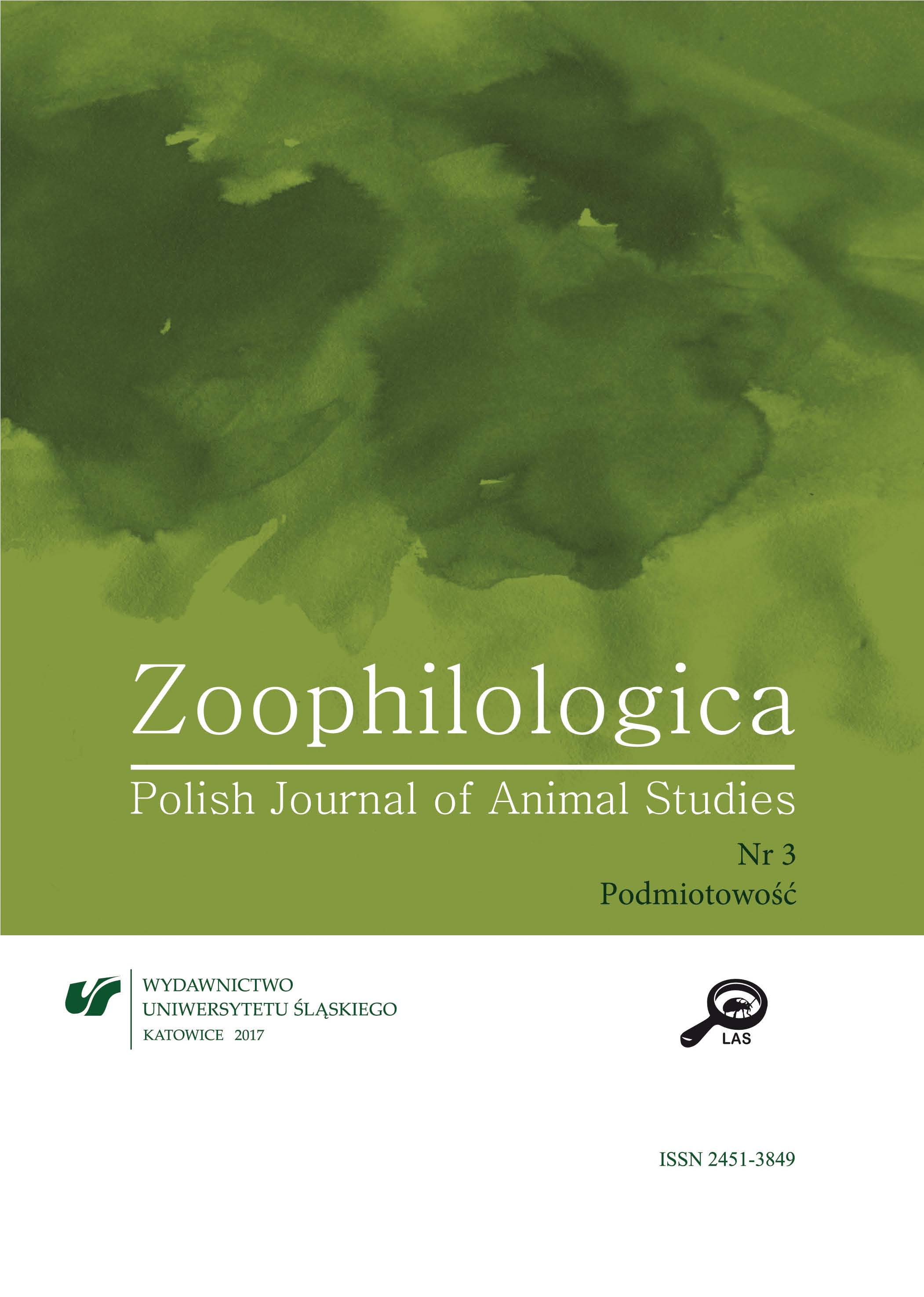Biedne zwierzęta patrzą na ludzi. Na marginesach książki Piotra Krupińskiego «„Dlaczego gęsi krzyczały?” Zwierzęta i Zagłada w literaturze polskiej XX i XXI wieku»
Poor animals look at people. Margin notes in book «„Why did the Geese Shriek?” Animals and the Holocaust in Polish Literature of the 20th and 21st Century» by Piotr Krupiński
Author(s): Miłosz MarkiewiczSubject(s): Essay|Book Review |Scientific Life, Studies of Literature, History of the Holocaust, Book-Review
Published by: Wydawnictwo Uniwersytetu Śląskiego
Keywords: Holocaust; animals; literature; suffering; community of death; Piotr Krupiński; post-anthropocentrism
Summary/Abstract: The article presents a reflection on the presence of animals in the Holocaust and in the narratives that underpinned it. The starting point of this consideration is the book by a Polish literary scholar – Piotr Krupiński «„Why did the Geese Shriek?” Animals and the Holocaust in Polish Literature of the 20th and 21st Century». The author juxtaposes the book with the comic book „Maus” by Art Spiegelman and the nazi propaganda film „The Eternal Jew”. The article raises questions about, among others, suffering of animals, a human–animal dualism in the context of the Holocaust, zoomorphism, and controversies over the so called animal holocaust. The author points out that we should remember the human is also an animal, especially at the time of the reflection on the Holocaust, which reveals the issue of „community of death”.
Journal: ZOOPHILOLOGICA. Polish Journal of Animal Studies
- Issue Year: 2017
- Issue No: 3
- Page Range: 239-248
- Page Count: 10
- Language: Polish

